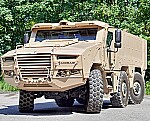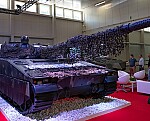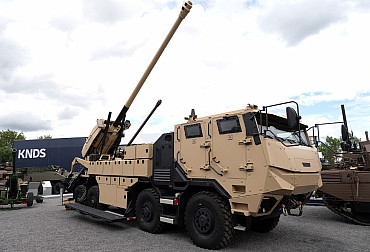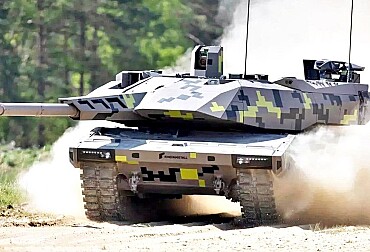France might offer Leclerc MBTs to the Republic of Cyprus to replace its aging T-80s and obsolete AMX-30s
The primary arms suppliers to the Cypriot National Guard, a combined arms force representing the Republic of Cyprus's air, land, and sea capabilities, have long been France and Russia. In September 2022, the United States fully lifted its arms embargo on Cyprus, and now France has reportedly offered Cyprus its Leclerc Main Battle Tanks (MBTs) to replace its aging Russian T-80s and older French AMX-30s.
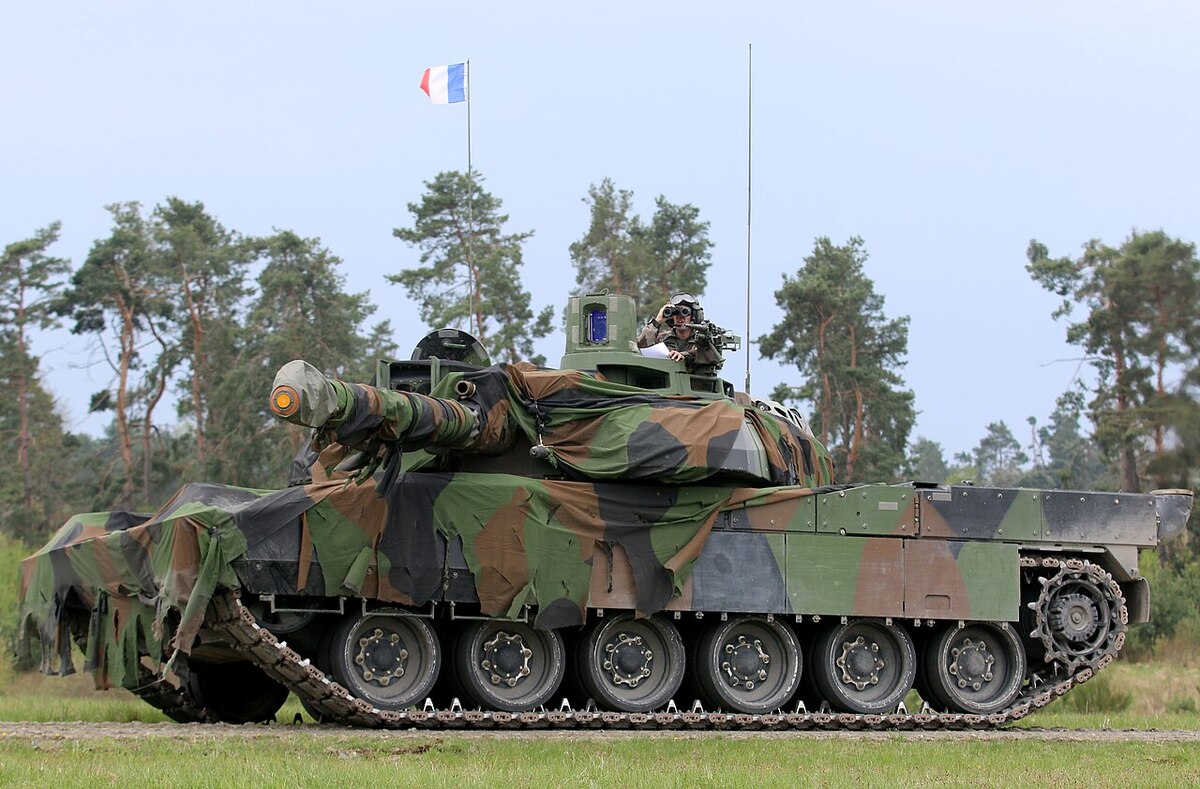
The Cypriot National Guard currently operates T-80 tanks purchased from Russia, alongside French-made AMX-30s. The T-80 exists in two versions: the T-80U (54 units) and the T-80UK (28 units), purchased between 1996 and 2011. Developed in the Soviet Union in the 1980s, the T-80U entered service in 1985. Powered by a 1250 hp GTD-1250 gas turbine, it boasts high dynamic performance. The T-80U has the typical layout of Russian battle tanks, with a three-man crew and an automatic loading system for the 125 mm 2A46-1 cannon, housed in a turret carousel.
The French AMX-30 fleet currently includes 52 AMX-30B2s. The AMX-30, developed in the 1960s by Atelier de Construction d’Issy-les-Moulineaux (AMX), entered service with the French Army in 1967. The AMX-30B2 Brenus is equipped with reactive armor for improved protection and features a GIAT CN-105 F1 105 mm x56 caliber gun. While the T-80 is also considered an older design, the AMX-30 is truly a historic piece, and the Cypriot National Guard urgently requires modernization.
France has also supplied the Cypriots with VAB armored vehicles, TRF1 and AMX Mle F3 guns, Gazelle helicopters, and MISTRAL anti-aircraft missiles, forming the basis of a long-standing and successful cooperation. Although Cyprus maintained close relations with Russia until the outbreak of the Ukraine conflict, it now finds it necessary to replace its Russian-built equipment. This shift is due to challenges in maintaining operational capacity under European Union sanctions on Russia and the US's CAATSA legislation. Accordingly, Cyprus recently purchased six H145M helicopters from Airbus Helicopters to replace the eleven Mil Mi-35s it sold to Serbia.
The Cyprus National Guard aims to modernize its capabilities. Alongside the H145M order, it has acquired Nora B-52 self-propelled guns from Serbia. In 2023, Cyprus initiated discussions to purchase second-hand Israeli Merkava Mk III tanks to replace the AMX-30B2s and some T-80Us. However, after the October 7 attacks, Israel withdrew these tanks from the market, prompting Cyprus to seek other options.
It is possible that the renewal of these AMX-30s and T-80s was discussed during the meeting between the French Minister for the Armed Forces, Sébastien Lecornu, and his Cypriot counterpart, Vasilis Palmas, at the Euronaval 2024 show on November 5. "The defense partnership between France and Cyprus is crucial in the current security context, both for maritime security in the eastern Mediterranean and de-escalation in the Middle East. Discussions with my Cypriot counterpart Vasilis Palmas, who is visiting Paris for the Euronaval exhibition. France supports the modernization of the Cypriot armed forces," commented Mr. Lecornu, without providing further details.
The topic of Main Battle Tanks is central, as the newspaper Kathimerini reported on October 13 that France had offered Leclerc tanks to Cyprus as part of a proposed €250 million agreement: "France has already supplied attack helicopters to Cyprus and is now positioning itself to replace the Russian T80-U tanks in Cyprus's fleet, facing stiff competition from Germany's Leopard tanks. To strengthen its bid, France is offering additional military systems to Cyprus as part of a larger deal."
"In addition to the MISTRAL systems, France is also advocating for Cyprus to purchase French-made Leclerc MBTs, competing with Germany's military industry for a potential €250 million contract. It’s unclear if France is offering new or used Leclerc tanks, though some reports suggest they may come from a batch previously sold to the United Arab Emirates. France is leveraging its past support during the U.S. embargo, when it provided modern weapons to Cyprus, to reinforce its position in the current competition," the Greek journal reported.
The Leclerc was developed in the 1980s by GIAT Industries (later Nexter, now KNDS France). When reading about this competition with Germany's military industry, it is important to note that KNDS Deutschland (formerly KMW), the Bavarian producer of the Leopard tanks, is France’s rival in this bid. The Leclerc entered service with the French Army in 1991, replacing the AMX-30 fleet in its armored units. Between 2000 and 2003, 388 diesel-powered Leclerc tanks were delivered to the United Arab Emirates.
Since Leclerc production ceased in 2008, any tanks offered would be second-hand. Kathimerini suggests they may come from the UAE, which already sold between 60 and 70 units to Jordan. Alternatively, the tanks could be from French reserves.
Of the 406 Leclercs produced for the French Army (out of a total of 862), only 222 remain in active service. According to the 2024–30 Military Programming Law, France plans to retain 200, all upgraded to XLR standard, allowing the resale of surplus units. A similar offer was made in 2009, when France proposed selling 30 to 40 units to Colombia, which declined. It remains to be seen what condition these mothballed tanks are in, the investment required to restore them to operational status, and whether such a proposal would appeal to the Cypriot general staff. While this would allow Cyprus to modernize its armored fleet cost-effectively, it is unclear if the Leclerc would be the preferred option, as Germany’s Leopard 2—widely used among European NATO members and already in service with Greece—appears to be a strong contender.





